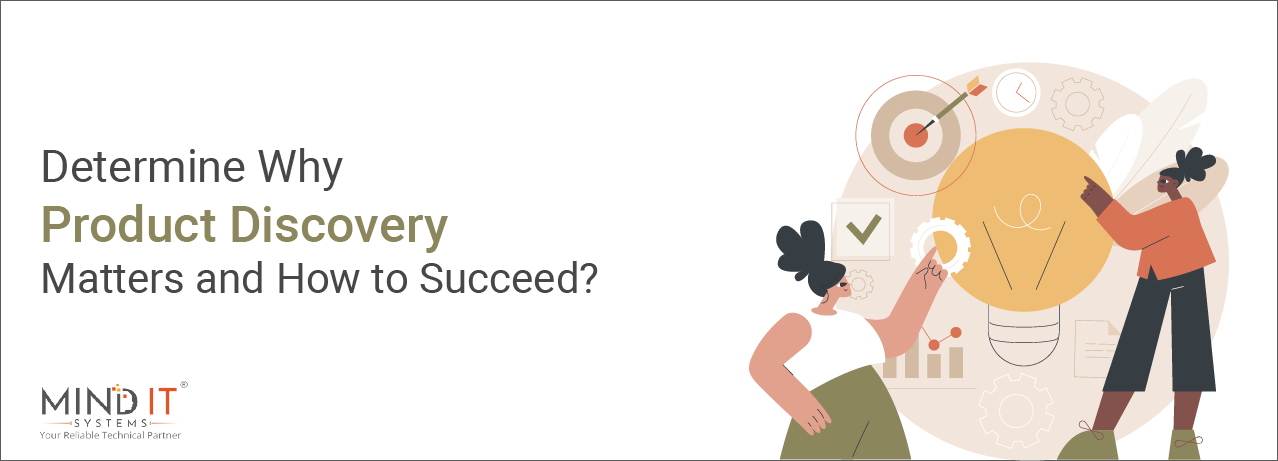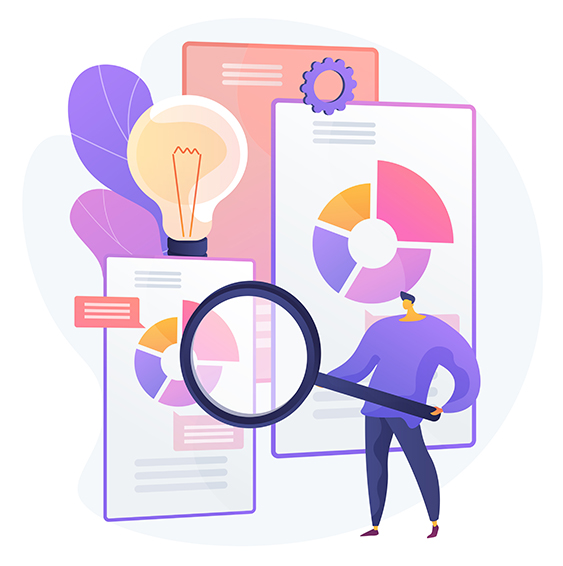
Determine Why Product Discovery Matters and How to Succeed?
Pay attention to product discovery when you are developing a digital product. If ignored, your app may end up among the 67.8% of all apps, with fewer than 1000 downloads.
From Harvard Business School, Clayton Christensen rightly commented that “there are 30,000 new products launched every year- regrettably many of them fail. It is all because businesses fail to research properly and do not validate their ideas with data.” Therefore, performing product analysis is vital before initiating product development. It can enable you to understand the market, your users, and their problems.
If you have queries like what product discovery is, why determining product discovery matters, and how to succeed, then here is the article we have for you where you can get all such information.
Let’s help you discover!
What is product discovery?
Product discovery is the primary stage conducted early in the software development process to construct a foundation that rests on “why,” “how,” & “what.” The strategy focuses on understanding the user’s goals and motivations to create hypotheses and map solutions to their issues.
The goals for conducting product inception in brief are –
- Discovering the needs and desires of the target user in great detail.
- Verify that the product or feature concepts fit the problem description and the theory.
- Creating solutions that address the user’s problems.
- Reduce the risks related to product development.
Why does product discovery phase matter in product development?
Before investing in product development, you must validate your expectations with discovery data collected from user interviews, customer surveys, or focus groups. If you become entirely ignorant towards your product discovery phase, there are high chances of developing a digital product that may be market unfit or with no market demand.
Failing product innovation might make you fail to support your product strategy, leading to slow or no acceptance. It can make you build a product without a true value proposition for target users.
Hence, investment in the product analysis phase is imperative, as it allows the software development team to produce a product strategy and develop features critical to the target user’s requirements. Fundamentally, the product inception process can enable you to build a foundation that comprises three things – “focus,” “empathy,” and “excitement.”
Reasons why the product analysis stage matters are –
- Help you to validate ideas
- Allows you to understand the market
- Permits you to build a more focused app
- Minimizes risks
- Speeds up product development
However, the development of a product always involves some risk. The following are the four significant risks as stated by Marty Cagan, a leading expert in product management –
- Value risk: The probability that consumers might utilize or reject the product.
- The risk associated with usability: How easily can customers use the product?
- Risk of achievability: Whether we have the resources necessary to build the product.
- Business survivability risk: Does the product fit into the rest of your operations and satisfy the needs of your customers?
Product leaders must include the product discovery phase in the product management process, to recognize and reduce such risks. This ensures the new product developed can please customers and provide you with a competitive advantage in the market.
What are the things involved in the product–finding phase, or how to define the overall product discovery structure?
Take a look at it now!
Product Finding Structure
We can categorize the overall product–finding structure into the following –
- Reorganization and listing of the customer pain points: A thorough understanding of potential customers’ demands can make a huge difference. The product designers start with hypotheses regarding the customer pain points and probable solutions. They begin with an open mindset and perform detailed market research to list customer issues.
- Cognition: After customers’ pain points get determined via research based on data, the product designers begin with the next stage, i.e., cognition and potential solutions. The product development team uses various tools and techniques, such as feature mapping, storyboarding, and brainstorming, to create solutions and competitive differentiators.
- Prototype and Testing: In this stage, the team uses MVP (minimum viable product) features to conduct prototype and testing. To help build an ideal digital product, the product development team makes sketches, wireframes, or mock-ups/clickable prototypes. Here, the ultimate objective is to gather actionable feedback and iterate toward a final version of MVP.
A Few Tips on Product Discovery Success
Keep in mind your product development success depends on a solid foundation. Emphasizing your products Why, How, and What can help you develop a distinctive value proposition, regardless of market fluctuations or the entry of new competitors.
Here are a few quick tips on product-finding success to help you get started in the right direction.
- Adopt a flexible stance: Be prepared to challenge generalizations about your customer’s requirements. Verify your concepts with data and customer discussions and be aware of when ingrained habits prevent innovation. Unresolved demands or inherent pain points may limit your competitors’ influence and scalability that they have yet to identify. Be mindful, success depends on utilizing industry expertise and experience and adapting to changing conditions and markets.
- Construct a squad of key players: You must construct a team comprising key players to deduce the problems and find solutions. A product manager, a product designer, and a solution architect all need to be present during a product discovery session. The discovery process can be more successful with these important participants present, making it easier to identify critical business and product decisions.
- Investigate all possible options: Finding answers to user problems is the goal of product discovery. It can help if you investigate every area of the product using product analytics, survey data, one-on-one interviews, and all other accessible techniques to ascertain which challenges and pain points are most crucial to your users. This information can support your hypotheses and guide your short- and long-term strategy.

Final thoughts
Undoubtedly, investing in product finding does make genuine sense. Products with actual customer data and insights can provide priority guidelines and lead to positive outcomes distinguishing “nice to have “from “necessity.” But a hurriedly designed digital product based on wrong expectations may not yield the intended results and can waste time and money.
Therefore, you need to understand the importance of the journey from product finding to structured product discovery. Although it might be time-consuming, it is fruitful in the long run.
Are you all set to dive deeper into the product development process and organize product discovery, but thinking about where to start? Contact seasoned tech experts from Mind IT® Systems to assist you.
Let’s start the conversation!
Share this post
About the Author

Sujoy Roy
(Head – Digital Marketing)
From my teenage time, I had a quench to solve problems and loved leadership. Starting my career in relation management, ignited my passion for managing people. While managing I realized technology needs to be incorporated to keep pace with the changing world & do my work efficiently.

